Features
The winter adventure In 16 countries – Part A
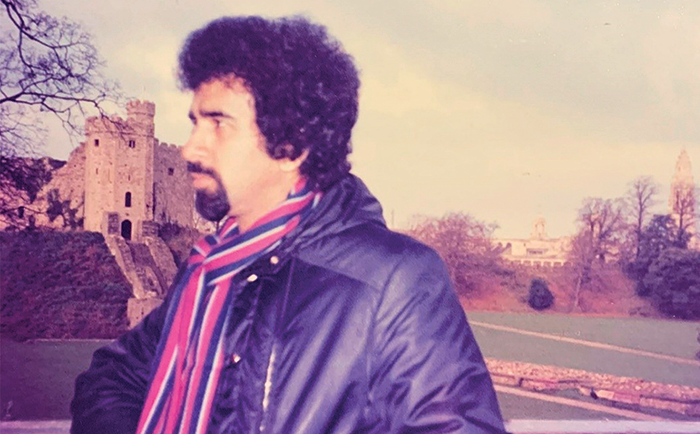
CONFESSIONS OF A GLOBAL GYPSY
By Dr. Chandana (Chandi) Jayawardena DPhil
President – Chandi J. Associates Inc. Consulting, Canada
Founder & Administrator – Global Hospitality Forum
chandij@sympatico.ca
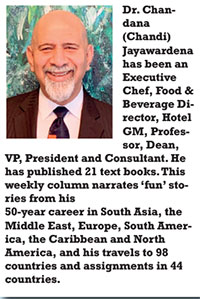
ADVENTURE
My wife and I ushered in 1985 at a New Year’s Eve dinner dance held at the Hammersmith Hall in London. We were in high spirits because a couple of days later we planned to commence our longest international trip. Our ambitious plan was to visit 16 countries in the European Union, Eastern Europe with a quick visit to the African continent. Coach, train and ship tickets, as well as visas for all of the countries we planned to visit were in place.
Some of our friends who were at the dance, were amazed, as well as, confused by our travel plans and had a few comments. “Covering 16 countries in six weeks is an impossible undertaking!” “You guys are planning to visit too many places in the middle of a bad winter!” “Ideally, you need a week to cover one country. Why don’t you visit only six countries but cover those well?” they asked us. Our plan was different. We wanted to get a quick experience of many cities of importance and interest, within a vast area by travelling overland and when necessary, on a few ferries. We also planned to do a three-hour coach tour of each city, have at least one traditional meal in each country, meet local people and get a general feel of each destination in an economical, simple way.
Although my initial budget for the trip was £1,000, after more calculation we realised that we would need around £1,300 for the trip, without the cost of our meals. I was yet to find a full-time job after completing my master’s degree in England, in which I had invested all of my savings. My wife took six weeks unpaid leave from her job in London. I placed job interviews on a back burner until March 1985. The uncertainty of what the future held for us added to the sense of adventure on which we embarked in the middle of a brutal winter, armed with heavy, winter coats, lightly-packed backpacks and lots of optimism.
WALES
We started off on an early morning coach from Victoria Station in London and after three hours travel though the beautiful countryside, we reached Cardiff, the capital city of Wales. In 1985, the population of Wales was only 2.8 million or 5% of the population of the United Kingdom.
From the post-Roman period, a number of Welsh kingdoms were formed within present-day Wales. The Welsh launched several revolts against English rule in the early 15th century. In the 16th century, Henry VIII, himself of Welsh extraction, passed the Laws in Wales Acts aiming to fully incorporate Wales into the Kingdom of England in 1535. Under England’s authority, Wales became a part of the Kingdom of Great Britain in 1707 and then the United Kingdom of Great Britain and Ireland in 1801. The Welsh retained their language and culture despite heavy English dominance.
Cardiff
With 350,000 residents in 1985, Cardiff was relatively a small capital city. We were disappointed that no city bus tours were available in mid-winter. Once we reached the historic, Cardiff Castle, which boasted an impressive near 2,000-year history, we joined a conducted walking tour with a friendly Welsh tour guide. The Normans had expanded the original fort built by the Romans. During the English Civil Wars in the mid-17th century which led to the execution of King Charles I, the Cardiff Castle was held for some time by the Royalists (Cavaliers). After that it was taken over by the Parliamentarians (Roundheads) led by Oliver Cromwell, the only non-royal to rule the country.
Cardiff is a city of contrasts. A rich history, modern shopping centres, busy commercial centres and a variety of sports facilities made Cardiff interesting. We also visited St. David’s Cathedral and the City Hall of Cardiff which has been acclaimed as one of the finest, civic centres in Europe. I was a fan of Richard Burton, the world-famous Welsh actor who had passed away exactly five months prior to our visit to Wales. I was keen to visit his birthplace, Pontrhydyfen, which was about an hour from Cardiff by train, but our tight schedule did not permit that additional stop. “We need to stick to our plan”, my wife gently reminded me.
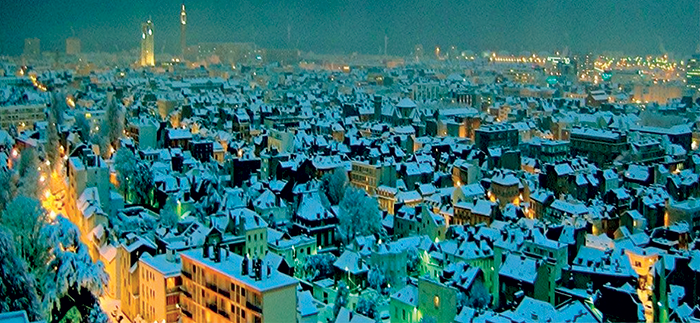
Swansea, Carmarthen and Fishguard Harbour
After an hour-long coach ride, we arrived at the second-largest city in Wales, Swansea, as the sun was setting. The city was quiet as the temperature was getting closer to zero. After dinner in Swansea, we took a late train to a small city, Carmarthen, where we spent a short time looking at the River Tywi (sometimes called the River Towy), the longest river in Wales. Although it was dark, some street lights and the sound of the running water helped us to get a slight feel of a great river.
We then took a midnight train to our last stop in Wales, Fishguard Harbour. There was not much to see at that time of the night. We were also feeling tired and cold. After a long wait we boarded a small ship and left the harbour around 3:00 am. After resting for four hours in the ship, we reached Ireland’s Rosslare Harbour.
IRELAND
Living in London since late 1983, I was exposed to the frequent, bomb attacks in England by the Irish Republican Army (IRA). That experience, and watching movies such as David Lean’s ‘Ryan’s Daughter’ instilled an interest in my mind about the history of Ireland.
Greek and Roman writers give some information about Ireland during the Classical period whe the island may be termed ‘Gaelic Ireland’. By the late 4th century AD Christianity had begun to gradually subsume or replace the earlier Celtic polytheism. Viking raids and settlement from the late eighth century AD resulted in an extensive cultural interchange, as well as innovations in military and transport. Many of Ireland’s towns were founded at this time as Viking trading posts.
The Norman invasion in the 12th century resulted in a partial conquest of the island and marked the beginning of more than 800 years of English political and military involvement in Ireland. Initially successful, Norman gains were rolled back over succeeding centuries as a Gaelic resurgence re-established Gaelic cultural pre-eminence over most of the country, apart from the walled towns and the area around Dublin.
Reduced to the control of small pockets of land, the English Crown did not make another attempt to conquer the island until the mid-15th century. This released resources and manpower for overseas expansion, beginning in the early 16th century. However, the nature of Ireland’s decentralized political organization into small territories, martial traditions, difficult terrain and climate and lack of urban infrastructure, meant that attempts to assert Crown authority were slow and expensive. The new Protestant faith was also successfully resisted by both the Gaelic and Norman-Irish. Henry VIII proclaimed himself King of Ireland in 1541 to facilitate the conquest.
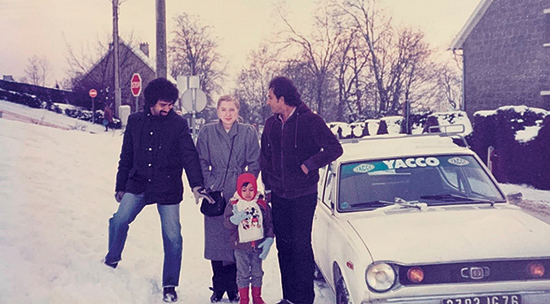
During the 17th century, the division between a Protestant, landholding minority and a dispossessed, Catholic majority was intensified and conflict between them was to become a recurrent theme in Irish history. In the early 19th century, in the wake of the republican United Irishmen Rebellion, the Irish Parliament was abolished and Ireland became part of a new United Kingdom of Great Britain and Ireland, formed by the Acts of Union 1800.
Irish attempts to break away continued and eventually in 1922, after the Irish War of Independence, most of Ireland seceded from the United Kingdom. It became the independent, Irish Free State under the Anglo-Irish Treaty. The six, north-eastern counties known as Northern Ireland, remained within the United Kingdom, creating the partition of Ireland. Since 1949, the Republic of Ireland is the official description for the state. However, Ireland remains the constitutional name of the state.
Ireland also experienced other major challenges. The catastrophe of the Great Famine struck Ireland in the mid-19th century resulting in over a million deaths from starvation and disease. This caused a million refugees to flee the country, mainly to USA.
Rosslare Harbour
The first thing we did in Ireland was to have a full Irish breakfast. After consuming generous amounts of bacon, sausages, baked beans, eggs, mushrooms, grilled tomatoes, hash, toast, butter, marmalade and lots of tea, we decided to skip lunch and dinner on January 5, 1985. Our first impressions of Ireland were all pleasant. After leaving Rosslare Harbour, we chatted with a few friendly Irish in the train. They told us that both of us looked very different from their usual tourists. We enjoyed the scenic beauty of the route during our three-hour train ride from Rosslare Harbour to Dublin. Most parts were lush and green, in spite of the winter weather.
Belfast, 19 years Later
Our 1985 visit to Ireland was limited mainly to the South-East coast and Dublin. When I asked my wife, “Shall we do a quick visit to Northern Ireland, as well?”, she resisted citing IRA violence in Belfast. I had to wait for 19 more years, before I eventually, travelled to Northern Ireland. It was an unplanned trip, motivated by a last-minute invitation.
In 2004, after I was elected as the President of the largest, professional body for hospitality managers of the United Kingdom – Hotel & Catering International Management Association (HCIMA, now Institute of Hospitality), I was invited by various HCIMA chapters around the world to attend their events and deliver keynote addresses. I travelled to 17 countries in 2004 and 2005, as part of my duties as the President. The first invitation I accepted was from the HCIMA – Northern Ireland Branch.
From London, I flew to Belfast to deliver the keynote address at the 2004 Northern Ireland annual hotelier’s award gala and present the main awards to winning hoteliers. I found that people in both parts of Ireland to be equally hospitable, friendly and helpful. Unfortunately, the colonial acts by their neighbouring, larger island and the history have not been too kind to them.
Dublin
The capital and largest city of Ireland, Dublin’s population in 1985, was around 900,000 or 25% of the total population of Ireland. Dublin is a beautiful city situated on a bay on the east coast, at the mouth of the River Liffey. It is bordered on the south by the Dublin Mountains, a part of the Wicklow Mountains range. There was an archaeological debate regarding precisely when Dublin originated, first with a settlement established by the Gaels during or before the 7th century CE, and second, a Viking settlement.
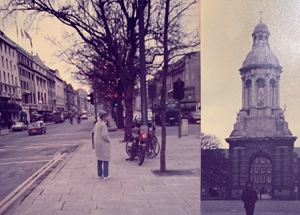
As the small Kingdom of Dublin, the city grew, and it became Ireland’s principal settlement after the 12th century Anglo-Norman invasion of Ireland. The city expanded rapidly from the 17th century and briefly became the second largest city in the British Empire and the sixth largest in Western Europe after the Acts of Union in 1800. Following independence in 1922, Dublin became the capital of the Irish Free State.
We managed to get an affordable room for £16 at Liffey House, a small guest house near the Dublin railway station. We were disappointed that the tourist information centre was closed and city coach tour were not operating till mid-January. Therefore, we explored the city without guided tours. Dublin was much larger than we expected and is a capital full of history and surprises.
We liked walking around Trinity College at the University of Dublin. It had been established in 1592 modelled after the collegiate universities of Oxford and Cambridge, and it was considered one of Europe’s elite institutions. We also walked around the city centre and along the famous O’Connell Street. Later we visited Christ Church Cathedral and the imposing St Patrick’s Cathedral, founded in 1191. The tour of Dublin was completed when we went to the Guinness Brewery.
After a couple of days in Dublin, we took a train back to Rosslare Harbour to board our ship to France. The ship had 300 cabins, but due to our strict budget, we settled for two reclining chairs to rest overnight. We sailed around 6:00 pm from a calm Irish Sea to a rough Atlantic Ocean on a gloomy and cold evening. We went to sleep early with the hope of a relaxing voyage of 415 miles.
We were rudely awoken around midnight due to jerks created by massive waves and freezing, Atlantic winter winds. With the waves becoming rougher, my wife became sea sick and was feeling very poorly. What crossed my mind while looking after her was whether we had made a bad decision in doing a long trip in the middle a brutal winter. Adding to our challenges, the captain of the ship announced that there would be a three-hour delay in reaching our first port in France, Le Havre. He blamed the bad weather and the storm for this long delay. We finally reached France after a rough 24 hours at sea.
FRANCE
It was our fourth visit to France, but first visit to Le Havre. Owing to the inclement weather, we felt like we were entering a strangely different country. The port was covered with layers of snow turned to black ice. This caused another two-hour delay before the disembarkation.
Le Havre
This port, in terms of total traffic, is the second largest in France after Marseille, the largest, French container port. The city and port had been founded in the 16th century. In the 18th century it was notorious as a busy hub for the slave trade. On a positive note, Le Havre has multiple historic sites, which in later years, prompted the UNESCO to inscribe the central city of Le Havre as a World Heritage Site. We did not see any of these attractions as we arrived there late in the evening when the city was blanketed with a heavy snow fall.
Rouen
After a 50-minute train ride we arrived at our destination for the night, Rouen. It was our second visit to this small, historic city. We were warmly welcomed by our hosts, an uncle of mine, Tilak and his French wife and son. After a warm shower and a nice ‘home-cooked’ Sri Lankan dinner, we slept like tired babies for nearly 12 hours. Next morning, we drove around Rouen.
Paris
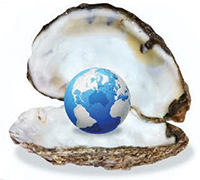
Due to the bad weather, all the trains were late, which is uncommon in Western Europe, where train services were usually efficient and punctual. The next day, we were happy to arrive in one of our favourite cities, Paris. With nearly nine million residents in 1985, Paris was a large capital city, yet maintained the charm of a smaller city in different parts of this well-planned metropolis. It was our fourth visit to Paris, but we felt that it was even prettier than before during a snow-covered evening. Paris looked like the winter wonderland.
Will continue in next week’s article: THE WINTER ADVENTURE IN 16 COUNTRIES – Part “B”,
with adventures in France, Portugal, Spain and Morocco…
Features
The heart-friendly health minister

by Dr Gotabhya Ranasinghe
Senior Consultant Cardiologist
National Hospital Sri Lanka
When we sought a meeting with Hon Dr. Ramesh Pathirana, Minister of Health, he graciously cleared his busy schedule to accommodate us. Renowned for his attentive listening and deep understanding, Minister Pathirana is dedicated to advancing the health sector. His openness and transparency exemplify the qualities of an exemplary politician and minister.
Dr. Palitha Mahipala, the current Health Secretary, demonstrates both commendable enthusiasm and unwavering support. This combination of attributes makes him a highly compatible colleague for the esteemed Minister of Health.
Our discussion centered on a project that has been in the works for the past 30 years, one that no other minister had managed to advance.
Minister Pathirana, however, recognized the project’s significance and its potential to revolutionize care for heart patients.
The project involves the construction of a state-of-the-art facility at the premises of the National Hospital Colombo. The project’s location within the premises of the National Hospital underscores its importance and relevance to the healthcare infrastructure of the nation.
This facility will include a cardiology building and a tertiary care center, equipped with the latest technology to handle and treat all types of heart-related conditions and surgeries.
Securing funding was a major milestone for this initiative. Minister Pathirana successfully obtained approval for a $40 billion loan from the Asian Development Bank. With the funding in place, the foundation stone is scheduled to be laid in September this year, and construction will begin in January 2025.
This project guarantees a consistent and uninterrupted supply of stents and related medications for heart patients. As a result, patients will have timely access to essential medical supplies during their treatment and recovery. By securing these critical resources, the project aims to enhance patient outcomes, minimize treatment delays, and maintain the highest standards of cardiac care.
Upon its fruition, this monumental building will serve as a beacon of hope and healing, symbolizing the unwavering dedication to improving patient outcomes and fostering a healthier society.We anticipate a future marked by significant progress and positive outcomes in Sri Lanka’s cardiovascular treatment landscape within the foreseeable timeframe.
Features
A LOVING TRIBUTE TO JESUIT FR. ALOYSIUS PIERIS ON HIS 90th BIRTHDAY

by Fr. Emmanuel Fernando, OMI
Jesuit Fr. Aloysius Pieris (affectionately called Fr. Aloy) celebrated his 90th birthday on April 9, 2024 and I, as the editor of our Oblate Journal, THE MISSIONARY OBLATE had gone to press by that time. Immediately I decided to publish an article, appreciating the untiring selfless services he continues to offer for inter-Faith dialogue, the renewal of the Catholic Church, his concern for the poor and the suffering Sri Lankan masses and to me, the present writer.
It was in 1988, when I was appointed Director of the Oblate Scholastics at Ampitiya by the then Oblate Provincial Fr. Anselm Silva, that I came to know Fr. Aloy more closely. Knowing well his expertise in matters spiritual, theological, Indological and pastoral, and with the collaborative spirit of my companion-formators, our Oblate Scholastics were sent to Tulana, the Research and Encounter Centre, Kelaniya, of which he is the Founder-Director, for ‘exposure-programmes’ on matters spiritual, biblical, theological and pastoral. Some of these dimensions according to my view and that of my companion-formators, were not available at the National Seminary, Ampitiya.
Ever since that time, our Oblate formators/ accompaniers at the Oblate Scholasticate, Ampitiya , have continued to send our Oblate Scholastics to Tulana Centre for deepening their insights and convictions regarding matters needed to serve the people in today’s context. Fr. Aloy also had tried very enthusiastically with the Oblate team headed by Frs. Oswald Firth and Clement Waidyasekara to begin a Theologate, directed by the Religious Congregations in Sri Lanka, for the contextual formation/ accompaniment of their members. It should very well be a desired goal of the Leaders / Provincials of the Religious Congregations.
Besides being a formator/accompanier at the Oblate Scholasticate, I was entrusted also with the task of editing and publishing our Oblate journal, ‘The Missionary Oblate’. To maintain the quality of the journal I continue to depend on Fr. Aloy for his thought-provoking and stimulating articles on Biblical Spirituality, Biblical Theology and Ecclesiology. I am very grateful to him for his generous assistance. Of late, his writings on renewal of the Church, initiated by Pope St. John XX111 and continued by Pope Francis through the Synodal path, published in our Oblate journal, enable our readers to focus their attention also on the needed renewal in the Catholic Church in Sri Lanka. Fr. Aloy appreciated very much the Synodal path adopted by the Jesuit Pope Francis for the renewal of the Church, rooted very much on prayerful discernment. In my Religious and presbyteral life, Fr.Aloy continues to be my spiritual animator / guide and ongoing formator / acccompanier.
Fr. Aloysius Pieris, BA Hons (Lond), LPh (SHC, India), STL (PFT, Naples), PhD (SLU/VC), ThD (Tilburg), D.Ltt (KU), has been one of the eminent Asian theologians well recognized internationally and one who has lectured and held visiting chairs in many universities both in the West and in the East. Many members of Religious Congregations from Asian countries have benefited from his lectures and guidance in the East Asian Pastoral Institute (EAPI) in Manila, Philippines. He had been a Theologian consulted by the Federation of Asian Bishops’ Conferences for many years. During his professorship at the Gregorian University in Rome, he was called to be a member of a special group of advisers on other religions consulted by Pope Paul VI.
Fr. Aloy is the author of more than 30 books and well over 500 Research Papers. Some of his books and articles have been translated and published in several countries. Among those books, one can find the following: 1) The Genesis of an Asian Theology of Liberation (An Autobiographical Excursus on the Art of Theologising in Asia, 2) An Asian Theology of Liberation, 3) Providential Timeliness of Vatican 11 (a long-overdue halt to a scandalous millennium, 4) Give Vatican 11 a chance, 5) Leadership in the Church, 6) Relishing our faith in working for justice (Themes for study and discussion), 7) A Message meant mainly, not exclusively for Jesuits (Background information necessary for helping Francis renew the Church), 8) Lent in Lanka (Reflections and Resolutions, 9) Love meets wisdom (A Christian Experience of Buddhism, 10) Fire and Water 11) God’s Reign for God’s poor, 12) Our Unhiddden Agenda (How we Jesuits work, pray and form our men). He is also the Editor of two journals, Vagdevi, Journal of Religious Reflection and Dialogue, New Series.
Fr. Aloy has a BA in Pali and Sanskrit from the University of London and a Ph.D in Buddhist Philosophy from the University of Sri Lankan, Vidyodaya Campus. On Nov. 23, 2019, he was awarded the prestigious honorary Doctorate of Literature (D.Litt) by the Chancellor of the University of Kelaniya, the Most Venerable Welamitiyawe Dharmakirthi Sri Kusala Dhamma Thera.
Fr. Aloy continues to be a promoter of Gospel values and virtues. Justice as a constitutive dimension of love and social concern for the downtrodden masses are very much noted in his life and work. He had very much appreciated the commitment of the late Fr. Joseph (Joe) Fernando, the National Director of the Social and Economic Centre (SEDEC) for the poor.
In Sri Lanka, a few religious Congregations – the Good Shepherd Sisters, the Christian Brothers, the Marist Brothers and the Oblates – have invited him to animate their members especially during their Provincial Congresses, Chapters and International Conferences. The mainline Christian Churches also have sought his advice and followed his seminars. I, for one, regret very much, that the Sri Lankan authorities of the Catholic Church –today’s Hierarchy—- have not sought Fr.
Aloy’s expertise for the renewal of the Catholic Church in Sri Lanka and thus have not benefited from the immense store of wisdom and insight that he can offer to our local Church while the Sri Lankan bishops who governed the Catholic church in the immediate aftermath of the Second Vatican Council (Edmund Fernando OMI, Anthony de Saram, Leo Nanayakkara OSB, Frank Marcus Fernando, Paul Perera,) visited him and consulted him on many matters. Among the Tamil Bishops, Bishop Rayappu Joseph was keeping close contact with him and Bishop J. Deogupillai hosted him and his team visiting him after the horrible Black July massacre of Tamils.
Features
A fairy tale, success or debacle

Sri Lanka-Singapore Free Trade Agreement
By Gomi Senadhira
senadhiragomi@gmail.com
“You might tell fairy tales, but the progress of a country cannot be achieved through such narratives. A country cannot be developed by making false promises. The country moved backward because of the electoral promises made by political parties throughout time. We have witnessed that the ultimate result of this is the country becoming bankrupt. Unfortunately, many segments of the population have not come to realize this yet.” – President Ranil Wickremesinghe, 2024 Budget speech
Any Sri Lankan would agree with the above words of President Wickremesinghe on the false promises our politicians and officials make and the fairy tales they narrate which bankrupted this country. So, to understand this, let’s look at one such fairy tale with lots of false promises; Ranil Wickremesinghe’s greatest achievement in the area of international trade and investment promotion during the Yahapalana period, Sri Lanka-Singapore Free Trade Agreement (SLSFTA).
It is appropriate and timely to do it now as Finance Minister Wickremesinghe has just presented to parliament a bill on the National Policy on Economic Transformation which includes the establishment of an Office for International Trade and the Sri Lanka Institute of Economics and International Trade.
Was SLSFTA a “Cleverly negotiated Free Trade Agreement” as stated by the (former) Minister of Development Strategies and International Trade Malik Samarawickrama during the Parliamentary Debate on the SLSFTA in July 2018, or a colossal blunder covered up with lies, false promises, and fairy tales? After SLSFTA was signed there were a number of fairy tales published on this agreement by the Ministry of Development Strategies and International, Institute of Policy Studies, and others.
However, for this article, I would like to limit my comments to the speech by Minister Samarawickrama during the Parliamentary Debate, and the two most important areas in the agreement which were covered up with lies, fairy tales, and false promises, namely: revenue loss for Sri Lanka and Investment from Singapore. On the other important area, “Waste products dumping” I do not want to comment here as I have written extensively on the issue.
1. The revenue loss
During the Parliamentary Debate in July 2018, Minister Samarawickrama stated “…. let me reiterate that this FTA with Singapore has been very cleverly negotiated by us…. The liberalisation programme under this FTA has been carefully designed to have the least impact on domestic industry and revenue collection. We have included all revenue sensitive items in the negative list of items which will not be subject to removal of tariff. Therefore, 97.8% revenue from Customs duty is protected. Our tariff liberalisation will take place over a period of 12-15 years! In fact, the revenue earned through tariffs on goods imported from Singapore last year was Rs. 35 billion.
The revenue loss for over the next 15 years due to the FTA is only Rs. 733 million– which when annualised, on average, is just Rs. 51 million. That is just 0.14% per year! So anyone who claims the Singapore FTA causes revenue loss to the Government cannot do basic arithmetic! Mr. Speaker, in conclusion, I call on my fellow members of this House – don’t mislead the public with baseless criticism that is not grounded in facts. Don’t look at petty politics and use these issues for your own political survival.”
I was surprised to read the minister’s speech because an article published in January 2018 in “The Straits Times“, based on information released by the Singaporean Negotiators stated, “…. With the FTA, tariff savings for Singapore exports are estimated to hit $10 million annually“.
As the annual tariff savings (that is the revenue loss for Sri Lanka) calculated by the Singaporean Negotiators, Singaporean $ 10 million (Sri Lankan rupees 1,200 million in 2018) was way above the rupees’ 733 million revenue loss for 15 years estimated by the Sri Lankan negotiators, it was clear to any observer that one of the parties to the agreement had not done the basic arithmetic!
Six years later, according to a report published by “The Morning” newspaper, speaking at the Committee on Public Finance (COPF) on 7th May 2024, Mr Samarawickrama’s chief trade negotiator K.J. Weerasinghehad had admitted “…. that forecasted revenue loss for the Government of Sri Lanka through the Singapore FTA is Rs. 450 million in 2023 and Rs. 1.3 billion in 2024.”
If these numbers are correct, as tariff liberalisation under the SLSFTA has just started, we will pass Rs 2 billion very soon. Then, the question is how Sri Lanka’s trade negotiators made such a colossal blunder. Didn’t they do their basic arithmetic? If they didn’t know how to do basic arithmetic they should have at least done their basic readings. For example, the headline of the article published in The Straits Times in January 2018 was “Singapore, Sri Lanka sign FTA, annual savings of $10m expected”.
Anyway, as Sri Lanka’s chief negotiator reiterated at the COPF meeting that “…. since 99% of the tariffs in Singapore have zero rates of duty, Sri Lanka has agreed on 80% tariff liberalisation over a period of 15 years while expecting Singapore investments to address the imbalance in trade,” let’s turn towards investment.
Investment from Singapore
In July 2018, speaking during the Parliamentary Debate on the FTA this is what Minister Malik Samarawickrama stated on investment from Singapore, “Already, thanks to this FTA, in just the past two-and-a-half months since the agreement came into effect we have received a proposal from Singapore for investment amounting to $ 14.8 billion in an oil refinery for export of petroleum products. In addition, we have proposals for a steel manufacturing plant for exports ($ 1 billion investment), flour milling plant ($ 50 million), sugar refinery ($ 200 million). This adds up to more than $ 16.05 billion in the pipeline on these projects alone.
And all of these projects will create thousands of more jobs for our people. In principle approval has already been granted by the BOI and the investors are awaiting the release of land the environmental approvals to commence the project.
I request the Opposition and those with vested interests to change their narrow-minded thinking and join us to develop our country. We must always look at what is best for the whole community, not just the few who may oppose. We owe it to our people to courageously take decisions that will change their lives for the better.”
According to the media report I quoted earlier, speaking at the Committee on Public Finance (COPF) Chief Negotiator Weerasinghe has admitted that Sri Lanka was not happy with overall Singapore investments that have come in the past few years in return for the trade liberalisation under the Singapore-Sri Lanka Free Trade Agreement. He has added that between 2021 and 2023 the total investment from Singapore had been around $162 million!
What happened to those projects worth $16 billion negotiated, thanks to the SLSFTA, in just the two-and-a-half months after the agreement came into effect and approved by the BOI? I do not know about the steel manufacturing plant for exports ($ 1 billion investment), flour milling plant ($ 50 million) and sugar refinery ($ 200 million).
However, story of the multibillion-dollar investment in the Petroleum Refinery unfolded in a manner that would qualify it as the best fairy tale with false promises presented by our politicians and the officials, prior to 2019 elections.
Though many Sri Lankans got to know, through the media which repeatedly highlighted a plethora of issues surrounding the project and the questionable credentials of the Singaporean investor, the construction work on the Mirrijiwela Oil Refinery along with the cement factory began on the24th of March 2019 with a bang and Minister Ranil Wickremesinghe and his ministers along with the foreign and local dignitaries laid the foundation stones.
That was few months before the 2019 Presidential elections. Inaugurating the construction work Prime Minister Ranil Wickremesinghe said the projects will create thousands of job opportunities in the area and surrounding districts.
The oil refinery, which was to be built over 200 acres of land, with the capacity to refine 200,000 barrels of crude oil per day, was to generate US$7 billion of exports and create 1,500 direct and 3,000 indirect jobs. The construction of the refinery was to be completed in 44 months. Four years later, in August 2023 the Cabinet of Ministers approved the proposal presented by President Ranil Wickremesinghe to cancel the agreement with the investors of the refinery as the project has not been implemented! Can they explain to the country how much money was wasted to produce that fairy tale?
It is obvious that the President, ministers, and officials had made huge blunders and had deliberately misled the public and the parliament on the revenue loss and potential investment from SLSFTA with fairy tales and false promises.
As the president himself said, a country cannot be developed by making false promises or with fairy tales and these false promises and fairy tales had bankrupted the country. “Unfortunately, many segments of the population have not come to realize this yet”.
(The writer, a specialist and an activist on trade and development issues . )












